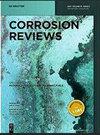In vitro biomedical corrosion and enzyme activity inhibition on modified Cu-Zn-Al bioalloy
IF 3.2
4区 材料科学
Q3 ELECTROCHEMISTRY
引用次数: 0
Abstract
Abstract The amperometric biosensor was created using a flat sheet of the Cu-Zn-Al shape memory alloy, with a shiny surface and uniform thickness below 1 mm. The high biocompatibility and a large specific surface area for enzyme loading are evaluated. In vitro biomedical corrosion testing of samples revealed successful immobilization of catalase, which has undergone quasi-reversible electron transfer from the surface and saline solution. A catalase that had been immobilized retained its basic structure and bioactivity and demonstrated a remarkable electrocatalytic response to hydrogen peroxide reduction. The reduction of hydrogen peroxide on the catalase-modified Cu-25.38Zn-3.3Al alloy was investigated using hydrodynamic amperometry in both the absence and presence of l-cysteine and K2[B3O3F4OH] inhibitors. Catalytic reduction currents have increased as a result of the gradual increase in hydrogen peroxide concentration. The study on enzyme activity inhibition has shown a lower corrosion rate of catalase-modified bioalloy than the initial sample because inhibitor ions occupy all sites of the immobilized enzyme.改性Cu-Zn-Al生物合金的体外生物医学腐蚀及酶活性抑制
摘要用Cu-Zn-Al形状记忆合金平板制作了一种电流型生物传感器,表面光滑,厚度均匀,小于1mm。该生物传感器具有较高的生物相容性和较大的酶负载比表面积。样品的体外生物医学腐蚀测试表明,过氧化氢酶已成功固定化,从表面和盐水溶液中进行了准可逆的电子转移。固定化的过氧化氢酶保留了其基本结构和生物活性,并对过氧化氢还原表现出显著的电催化反应。在不存在和存在l-半胱氨酸和K2[B3O3F4OH]抑制剂的情况下,使用流体动力学安培法研究了过氧化氢酶修饰的Cu-25.38Zn-3.3Al合金上过氧化氢的还原。催化还原电流由于过氧化氢浓度的逐渐增加而增加。对酶活性抑制的研究表明,过氧化氢酶修饰的生物合金的腐蚀速率低于初始样品,因为抑制剂离子占据了固定化酶的所有位点。
本文章由计算机程序翻译,如有差异,请以英文原文为准。
求助全文
约1分钟内获得全文
求助全文
来源期刊

Corrosion Reviews
工程技术-材料科学:膜
CiteScore
5.20
自引率
3.10%
发文量
44
审稿时长
4.5 months
期刊介绍:
Corrosion Reviews is an international bimonthly journal devoted to critical reviews and, to a lesser extent, outstanding original articles that are key to advancing the understanding and application of corrosion science and engineering in the service of society. Papers may be of a theoretical, experimental or practical nature, provided that they make a significant contribution to knowledge in the field.
 求助内容:
求助内容: 应助结果提醒方式:
应助结果提醒方式:


